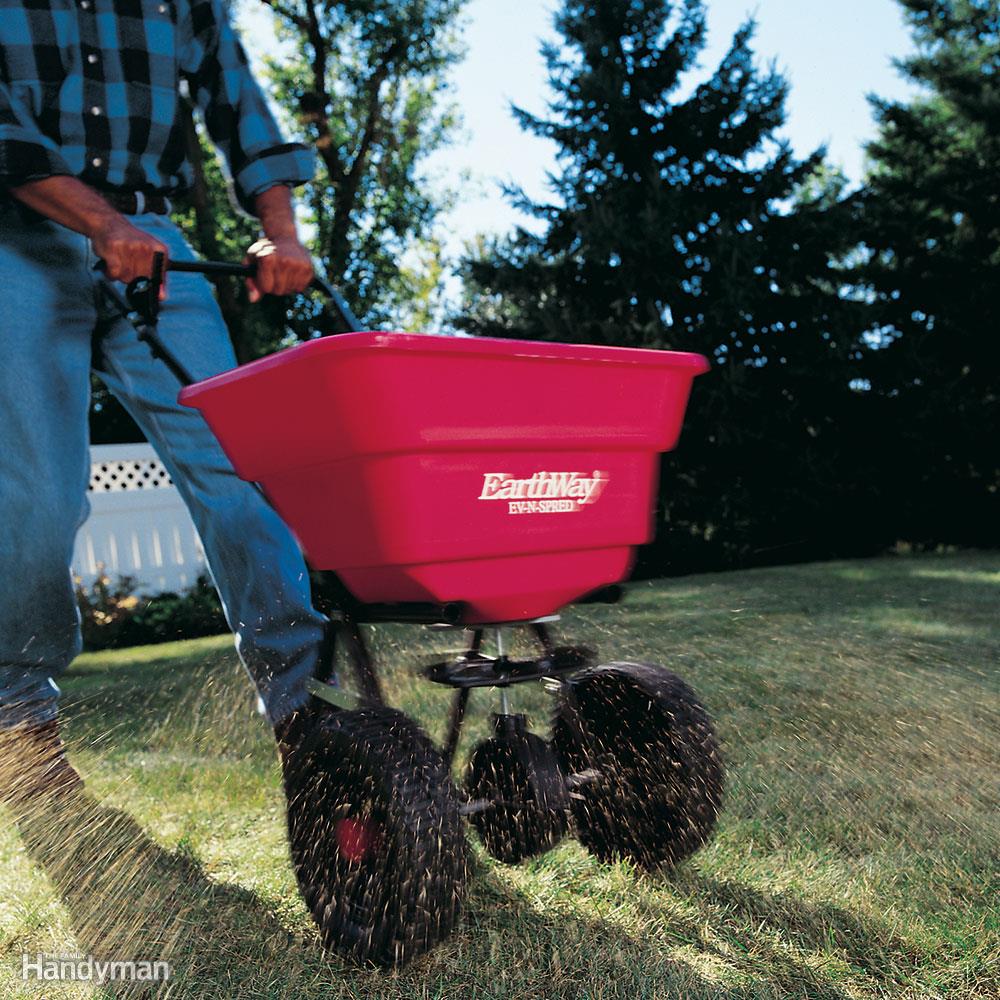Most people think about lawn care more in spring and summer than in fall. Spring, because lawns are emerging out of dormancy from winter, and summer, because we are all struggling to keep it alive through the heat. But fall lawn care shouldn’t be overlooked. Fall lawn fertilizing helps with quicker green up in spring and overall health of your turf. When it comes to fertilizing your lawn in fall, you have two options, and two time periods with which to get it done properly. Today we’ll show you the differences in each fertilizer type and why they should be applied at different times of the year.
The optimal time for fall lawn fertilization is actually around mid October. However, this only means that this is the optimal time for your lawn to take up nutrients from the fertilizer before it goes into winter dormancy.
If you choose to fertilize with a synthetic fertilizer, like our Rainbow Gardens 18-6-5, no problem applying it mid October. BUT, if you opt for an organic product to fertilize your lawn, like Medina, Texas Tee, or Fertilome, these products must be applied to your turf now, in the first few weeks of September. (Mid Feb for spring organic application.)


Reasons for different application times for synthetic and organic lawn fertilizer:
- Synthetic fertilizers are made up of ingredients that are readily available for plant uptake. These fertilizers are designed so that once you water them in, the ingredients (nitrogen, phosphorous, and potassium) are released immediately into the soil and begin to break down right away for plants to use.
- Organic fertilizer ingredients are not readily available for plant uptake. It takes time for them to break down to where their ingredients can be absorbed by lawns and plants. So if organic fertilizer is applied in these first few weeks of September, the nutrients will have the appropriate amount of time to break down efficiently and be ready for lawns to absorb and use by mid October. Get it? It’s kind of like a math problem.
So which lawn fertilizer do you choose? Synthetic or Organic?
It really comes down to a preference. You’ll get no judgement from us if you choose a synthetic lawn fertilizer or if you choose an organic lawn fertilizer, but we will offer you the facts:
- Many people choose synthetic lawn fertilizers because, let’s face it, we live in a day of “we want it now”! Synthetic will give you faster results, faster green up, faster growth; but it doesn’t do anything for the soil which is the basis and foundation for truly healthy lawns and plants. In actuality, chemicals in synthetic products tend to destroy beneficial microbes, microorganisms, and other beneficial species in the soil. The soil actually ends up becoming weaker and more fertilizer is than needed; this becomes an endless cycle.
- Organic lawn fertilizers, while slower to show their results, work with the soil and release their nutrients in a manner to replenish, restore, and rebuild a healthier soil. Organic fertilizers don’t overburden the soil with excess minerals, they provide what the soil needs and work to create healthy soil. Healthy soil creates a healthy environment for plants to live in. A healthy environment creates healthy plants and healthy plants generally mean less issues with pests, disease and weeds. But…you need to be a little patient and continue building this environment to have it work for you. If you are interested in more information about soil building and organics, I’d highly recommend anything you can read by Malcolm Beck.
Again, the choice is really up to you, and you’ll get no judgements from us whichever you choose. But if you decide to choose organic, don’t delay in getting it put down now so come mid October, your lawn will be slurping up the nutrients! Otherwise, hold off until mid October to winterize your lawn if you are choosing the synthetic route. (Mid Feb for spring.)
Green Grass Ahead!
~The Happy Gardener-Lisa Mulroy


Trackbacks/Pingbacks